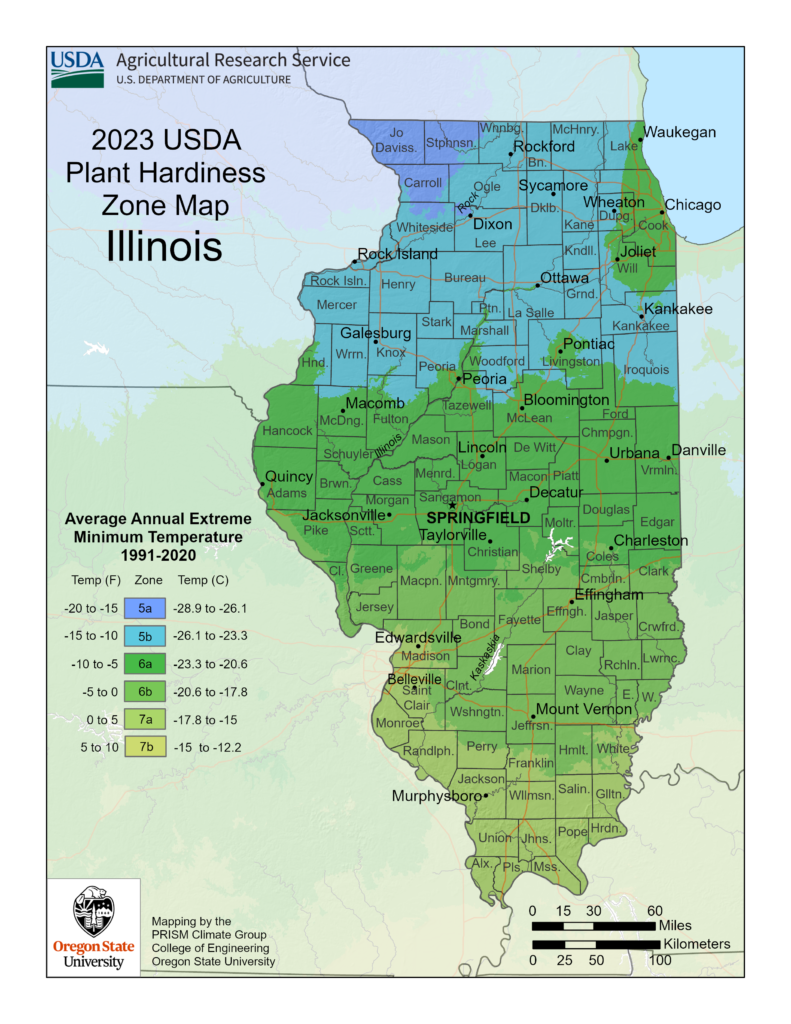The USDA released their latest version of Plant Hardiness Zone map in 2023. Plant hardiness zones represent the best estimate of the average annual extreme minimum temperature at any location and are based on temperature data over a particular time period, often 30 years. The newest hardiness zone map is based on weather data from 1991 to 2020, and like earlier versions, is divided into 13 zones across the United States.
The Latest Map
The latest plant hardiness zone map shows Illinois spanning zones 5a to 7b. The most northern zone (5a) is isolated to the very northwest corner of the state, while much of the rest of northern Illinois is in zone 5b. Most of the Chicagoland area is in zone 6a because of the combined moderating effects of Lake Michigan and urban sprawl. Most parts of central Illinois north of Interstate 70 are in zone 6a, while areas between Interstates 70 and 64 are in zone 6b. Most of southern Illinois is in zone 7a, and a small part of Illinois is in zone 7b for the first time in the plant hardiness zone map history.

The Zones They Are A-Changin’
One of the most consistent changes in Illinois’ climate that is directly linked to human-caused global warming is warming winters. In fact, climatological winter (December – February) average temperatures have increased faster than any other season over the past century. In the winter, though, nighttime low temperatures have increased at a faster rate than daytime high temperatures. Furthermore, the most extreme low (i.e., cold) winter nighttime temperatures have increased faster than milder winter temperatures. Practically, these changes have noticeably decreased the frequency and intensity of extreme cold and the risk of cold exposure for plants, animals, and humans.
There are benefits of less extreme winter cold, including a reduced risk of human health impacts and cold injuries to perennial crops and natural ecosystems. However, the obvious change in winter temperature across Illinois–as exemplified by these new maps–also brings significant shifts in plant and animal habitat suitability. Warmer winters, embedded in an overall warmer and wetter Illinois, may be more conducive to certain species of non-native, invasive plants, pests, and plant and animal diseases and vectors.

